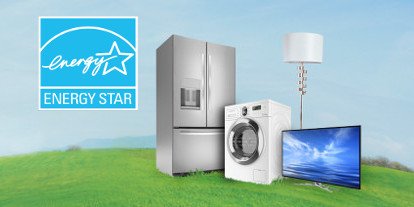ENERGY STAR

2019 Status Update
- Finalized the ENERGY STAR Air Cleaner specification, which leveraged the following standards:
- “ANSI/AHAM AC-1-2015 Method of Measuring the Performance of Portable Household Electric Room Air Cleaners for measuring clean air delivery rate (CADR) and Operating Power (W)”
- “UL 867 Ed. 5.0 Electrostatic Air Cleaners for measuring ozone”
- “IEC 62301 Ed. 2.0 Household electrical appliances – Measurement of standby power for measuring Partial On Mode power”
- Completed a new specification for Smart Home Energy Management that references “IEC 62301:2011 – Household electrical appliances - Measurement of standby power
- Completed revisions ENERGY STAR specification for Displays that references “IEC 62301:2011 - Household electrical appliances - Measurement of standby power, and IEC 62087:2011, “Methods of measurement for the power consumption of audio, video and related equipment
- Completed a revision of the Desktop Computer specification that references “IEC 62301:2011 - Household electrical appliances - Measurement of standby power,” “IEC 62623:2012– Measurement of energy consumption” for idle power testing, and “IEC 60107-1 Edition 3.0 Methods of measurement on receivers for television broadcast transmissions”
- Worked with the Consumer Technology Association’s (CTA’s) Working Group 3, which is developing “ANSI/CTA 2084 - Test Methods for Determining A/V Products Energy Efficiency.” ENERGY STAR plans to release the draft test method for stakeholder use in January 2020 in order to build a dataset.
- Tracked ASTM revisions including ASTM F1696-18 Standard Test Method for Energy Performance of Stationary-Rack, Door-Type Commercial Dishwashing Machines and ASTM F1920-15 Standard Test Method for Energy Performance of Rack Conveyor Commercial Dishwashing Machines. As part of the same spec development effort (ENERGY STAR commercial dishwasher v3.0), tracking revisions to the NSF/ANSI 3-2019 standard intended to quantify rinsability.
2016 Status Update
- ENERGY STAR Certified Products: Created in 1992 and authorized by the Energy Policy Act of 2005, the ENERGY STAR program helps consumers, government, and businesses across the country adopt energy-efficient products and practices. The ENERGY STAR program relies on voluntary consensus standards, and has a systematic process for developing ENERGY STAR specifications that prioritizes transparency, inclusiveness, and consistency. The ENERGY STAR label identifies products that meet the highest energy efficiency and performance standards. EPA is an active participant in consensus based standard development, and commonly references testing, performance, and interoperability standards within the ENERGY STAR product specifications.
- ENERGY STAR certification requirements are based on international standards for conformity assessment. Before a product earns the ENERGY STAR label it must be tested in an EPA-recognized laboratory and certified by an EPA-recognized certification body (CB). EPA requires recognized organizations to be accredited to ISO/IEC 17025 for labs and ISO/IEC 17065 for CBs. Accreditation must be issued by an accreditation body that operates according to ISO/IEC 17011 and is a signatory to the International Laboratory Accreditation Cooperation for labs or the International Accreditation Forum for CBs. Details are available at www.energystar.gov/3rdpartycert.
